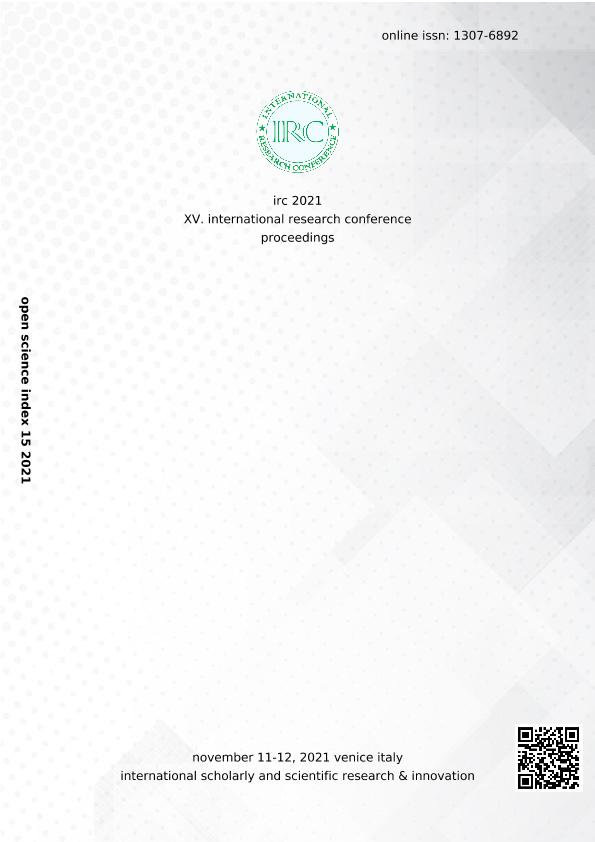Mostrar el registro sencillo del ítem
dc.contributor.author
Burbano Patiño, Aura Alejandra

dc.contributor.author
Horst, María Fernanda

dc.contributor.author
Lassalle, Verónica Leticia

dc.contributor.author
Agotegaray, Mariela Alejandra

dc.contributor.other
No especifica

dc.date.available
2023-11-03T11:57:55Z
dc.date.issued
2021
dc.identifier.citation
A Magnetic Hydrochar Nanocomposite as a Potential Adsorbent of Emerging Pollutants; International Conference on Hazardous Waste Management and Water Treatment ICHWMWT; Venecia; Italia; 2021; 34-34
dc.identifier.issn
1307-6892
dc.identifier.uri
http://hdl.handle.net/11336/216912
dc.description.abstract
Water pollution is of worldwide concern due to its importance as an essential resource for life. Industrial and urbanistic growth are anthropogenic activities that have caused an increase of undesirable compounds in water. In the last decade, emerging pollutants have become of great interest since, at very low concentrations (µg/L and ng/L), they exhibit a hazardous effect on wildlife, aquatic ecosystems, and human organisms. One group of emerging pollutants that are a matter of study are pharmaceuticals. Their high consumption rate and their inappropriate disposal have led to their detection in wastewater treatment plant influent, effluent, surface water, and drinking water. In consequence, numerous technologies have been developed to efficiently treat these pollutants. Adsorption appears as an easy and cost-effective technology. One of the most used adsorbents of emerging pollutants removal are carbonbased materials such as hydrochars. This study aims to use a magnetic hydrochar nanocomposite to be employed as an adsorbent for diclofenac removal. Kinetics models and the adsorption efficiency in real water samples were analyzed. For this purpose, a magnetic hydrochar nanocomposite was synthesized through the hydrothermal carbonization (HTC) technique hybridized to co-precipitation to add the magnetic component into the hydrochar, based on iron oxide nanoparticles. The hydrochar was obtained from sunflower husk residue as the precursor. TEM, TGA, FTIR, Zeta potential as a function of pH, DLS, BET technique, and elemental analysis were employed to characterize the material in terms of composition and chemical structure. Adsorption kinetics were carried out in distilled water and real water at room temperature, pH of 5.5 for distilled water and natural pH for real water samples, 1:1 adsorbent: adsorbate dosage ratio, contact times from 10-120 minutes, and 50% dosage concentration of DCF. Results have demonstrated that magnetic hydrochar presents superparamagnetic properties with a saturation magnetization value of 55.28 emu/g. Besides, it is mesoporous with a surface area of 55.52 m2/g. It is composed of magnetite nanoparticles incorporated into the hydrochar matrix as can be proven by TEM micrographs, FTIR spectra, and zeta potential. On the other hand, kinetic studies were carried out using DCF models finding percent removal efficiencies up to 85.34% after 80 minutes of contact time. In addition, after 120 minutes of contact time, desorption of emerging pollutants from active sites took place which indicated that the material got saturated after that t time. In real water samples, percent removal efficiencies decrease up to 57.39%, ascribable to a possible mechanism of competitive adsorption of organic or inorganic compounds, ions for active sites of the magnetic hydrochar. The main suggested adsorption mechanism between the magnetic hydrochar and diclofenac include hydrophobic and electrostatic interactions as well as hydrogen bonds. It can be concluded that the magnetic hydrochar nanocomposite could be valorized into a by-product which appears as an efficient adsorbent for DCF removal as a model emerging pollutant. These results are being complemented by modifying experimental variables such as pollutant’s initial concentration, adsorbent: adsorbate dosage ratio, and temperature. Currently, adsorption assays of other emerging pollutants are being been carried out.
dc.format
application/pdf
dc.language.iso
eng
dc.publisher
World Academy of Science, Engineering and Technology
dc.rights
info:eu-repo/semantics/openAccess
dc.rights.uri
https://creativecommons.org/licenses/by-nc-sa/2.5/ar/
dc.subject
MAGNETIC HYDROCHAR
dc.subject
ADSORPTION
dc.subject
DICLOFENAC AND LIDOCAINE
dc.subject
REAL WATER
dc.subject.classification
Química Inorgánica y Nuclear

dc.subject.classification
Ciencias Químicas

dc.subject.classification
CIENCIAS NATURALES Y EXACTAS

dc.title
A Magnetic Hydrochar Nanocomposite as a Potential Adsorbent of Emerging Pollutants
dc.type
info:eu-repo/semantics/publishedVersion
dc.type
info:eu-repo/semantics/conferenceObject
dc.type
info:ar-repo/semantics/documento de conferencia
dc.date.updated
2022-09-13T17:27:13Z
dc.journal.volume
15
dc.journal.number
11
dc.journal.pagination
34-34
dc.journal.pais
Italia

dc.journal.ciudad
Venicia
dc.description.fil
Fil: Burbano Patiño, Aura Alejandra. Consejo Nacional de Investigaciones Científicas y Técnicas. Centro Científico Tecnológico Conicet - Bahía Blanca. Instituto de Química del Sur. Universidad Nacional del Sur. Departamento de Química. Instituto de Química del Sur; Argentina
dc.description.fil
Fil: Horst, María Fernanda. Consejo Nacional de Investigaciones Científicas y Técnicas. Centro Científico Tecnológico Conicet - Bahía Blanca. Instituto de Química del Sur. Universidad Nacional del Sur. Departamento de Química. Instituto de Química del Sur; Argentina
dc.description.fil
Fil: Lassalle, Verónica Leticia. Consejo Nacional de Investigaciones Científicas y Técnicas. Centro Científico Tecnológico Conicet - Bahía Blanca. Instituto de Química del Sur. Universidad Nacional del Sur. Departamento de Química. Instituto de Química del Sur; Argentina
dc.description.fil
Fil: Agotegaray, Mariela Alejandra. Consejo Nacional de Investigaciones Científicas y Técnicas. Centro Científico Tecnológico Conicet - Bahía Blanca. Instituto de Química del Sur. Universidad Nacional del Sur. Departamento de Química. Instituto de Química del Sur; Argentina
dc.relation.alternativeid
info:eu-repo/semantics/altIdentifier/url/https://publications.waset.org/abstracts/139757/a-magnetic-hydrochar-nanocomposite-as-a-potential-adsorbent-of-emerging-pollutants
dc.conicet.rol
Autor

dc.conicet.rol
Autor

dc.conicet.rol
Autor

dc.conicet.rol
Autor

dc.coverage
Internacional
dc.type.subtype
Conferencia
dc.description.nombreEvento
International Conference on Hazardous Waste Management and Water Treatment ICHWMWT
dc.date.evento
2021-11-11
dc.description.ciudadEvento
Venecia
dc.description.paisEvento
Italia

dc.type.publicacion
Journal
dc.description.institucionOrganizadora
World Academy of Science, Engineering and Technology
dc.source.revista
World Academy of Science, Engineering and Technology
dc.date.eventoHasta
2021-11-12
dc.type
Conferencia
Archivos asociados
